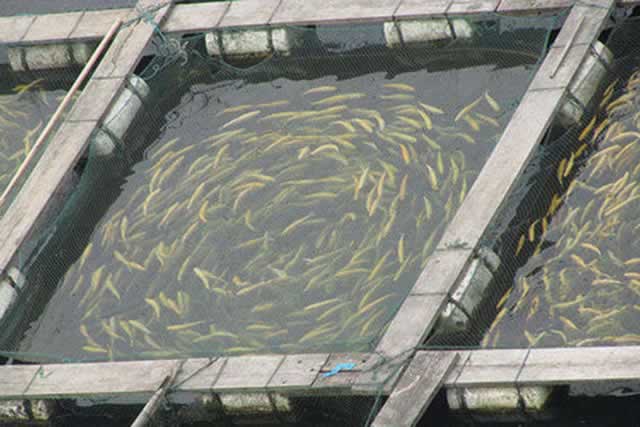
The Sunday Mail

 Construction of the fish ponds must be done professionally so as to minimise the risk of the pond becoming a haven for breeding mosquitoes
Construction of the fish ponds must be done professionally so as to minimise the risk of the pond becoming a haven for breeding mosquitoesFish farming has the potential to uplift both rural and urban populations.
Fish can supplement the protein needs of a family and also add to their income.
Since time immemorial, man has kept fish in ponds or in aquariums in or outside the home.
View fish farming as an extension of this form of recreation with greater rewards.
Tilapia, bream and trout are the major fish species reared in Zimbabwe and when one is considering rearing fish at home, the most important factor above all is safety of children and other animals in the yard.
Ensure that the pool is fenced and locked at all times to avoid cases of children drowning. This cannot be overly stressed. Safety nets can also be installed on top of the ponds.
This project suits those with existing pools or those with sizeable properties on which to construct a pond. A suitable pool must have both a deep and shallow end, an inlet and outlet valve to fill and empty the water. Consider having an additional nursery pond from which to raise your young fish before transferring them to the main pond.
The main pond must be large enough to avoid temperature fluctuations and the larger the pond, the longer it takes for the water temperature to change. Construction of the fish ponds must be done professionally so as to minimise the risk of the pond becoming a haven for breeding mosquitoes. Don’t make the shallow end too shallow as this can be a potential breeding area for mosquitoes.
The water temperature is warmer in very shallow water and this encourages mosquito larva.
Site the pool in a position of maximum sunlight, avoiding places with large overhanging trees as these drop leaves into the pool, thereby reducing the oxygen levels of the water body.
Aquaculture requires the control of fish densities and water quality.
Maintaining a good balance ensures that oxygen levels do not fluctuate as these result in fish deaths.
A good pond size can be 20 by 25 metres or 500 square metres.
Fertilising your pond is the next step after filling it with water, and this is achieved by using animal manure or mixed compost made with both plant and animal manure, which is placed in a crib or basket in the pond.
This turns the water green, suitable conditions for bream fish rearing. Add a bucket of the manure every week to keep the water green. The water will be ready for your breams after a week.
You will need 25 juvenile fish (a baby fish is called a fry) for every 10 square metres so if the tank is 500 square metres, stock the pond with 1250 fish. Compare the water temperature from where the fish are to where they are going.
If there is a marked difference, adjust the temperature gradually by adding water until the two environments are the same.
Do not pour the fish but let them swim out into the pond.
In your juvenile pond, you can also stock 10 fully grown male fish to 40 fully grown female fish. Seek advice on identifying the two sexes.
Feed your fish with finely ground grain mill sweepings, rice bran, beer wastes, termites, mowed grass lawn, kitchen left overs, animal waste, fruit and vegetables.
Try to feed your fish at the same time every day once a day or twice daily. Throw in the food on the shallow end of the pool so you can see the fish.
Match your feeding with the amount the fish can consume.
Too much left over food in the pond depletes the oxygen in the pond.
If it’s too hot and there is too much food and fertiliser in the pond, the fish are deprived of oxygen, so ensure that you stop fertilising the pond for several weeks, reducing the feed as well.
To add air into the pond, change the water gradually over a couple of days. Add the water quickly to allow oxygen into the pond.
If your pond has 1 200 fish, feed 1 200g to 2 200g of food daily the first month increasing this amount every month gradually until the sixth month when it can be as much as 7 000g per day until harvest time. Seek expert help if your fish are still dying after you have tried adding oxygen. You can harvest your fish with a net.
This can preferably be in the morning when it is cool. Harvest only what you are able to process.
It is advisable to drain your pond at harvest time, this gives you the opportunity to clean the pond.



